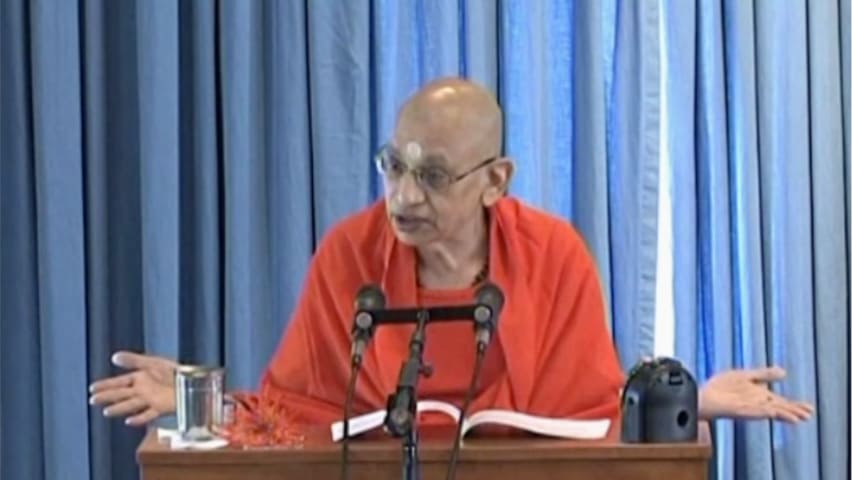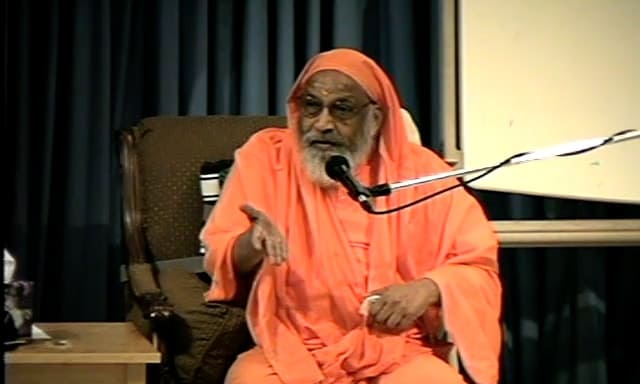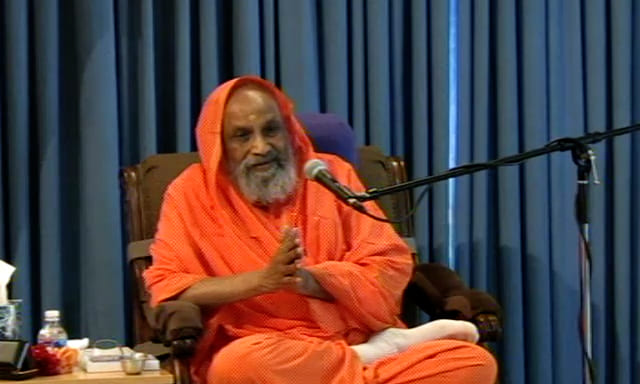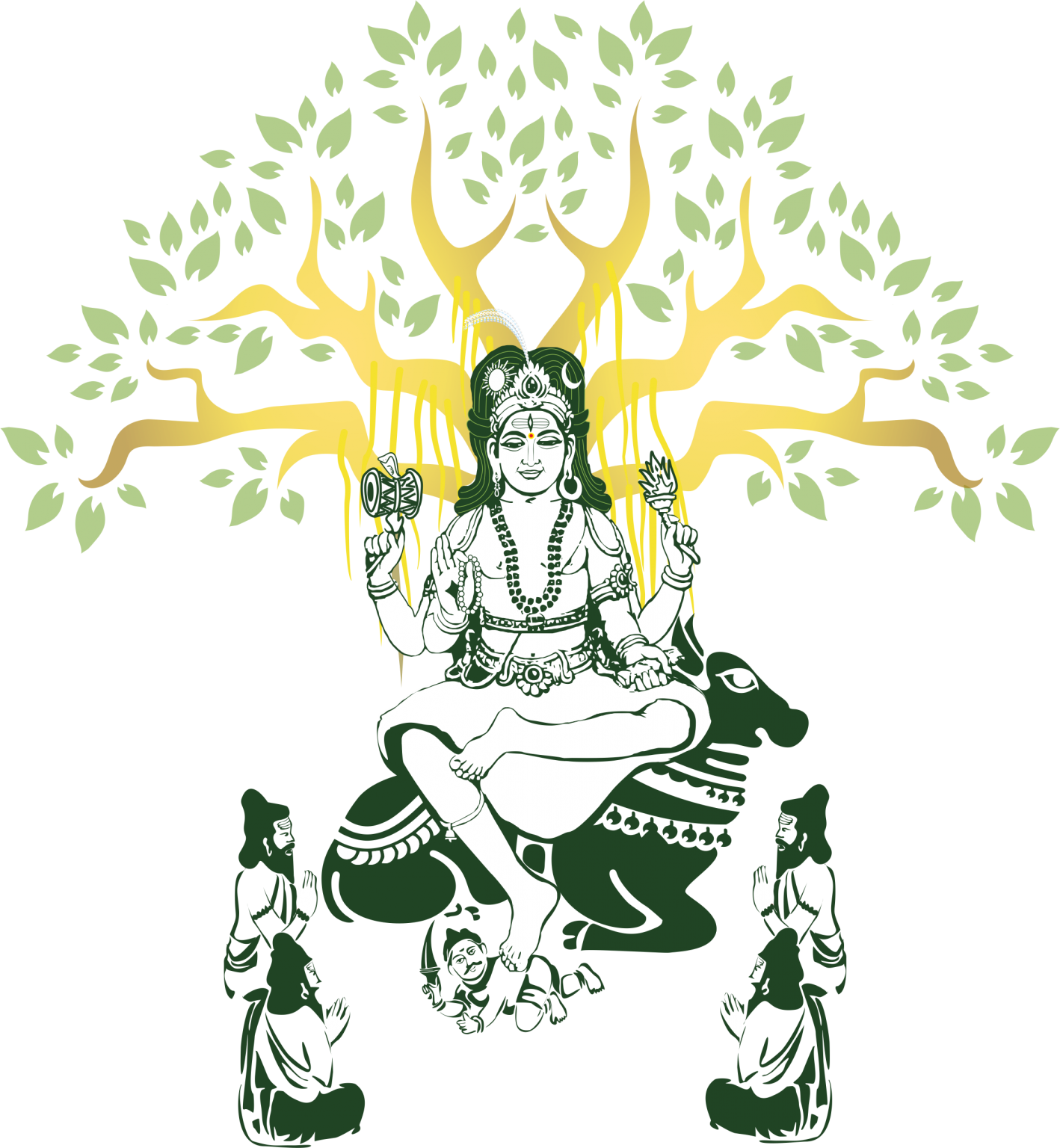Swami Dayananda Saraswati
Excerpt from the book Tattvabodha, Arsha Vidya Research and Publications, 2009
What is titikṣā?
Śītoṣṇa-sukhaduḥkhādi-sahiṣṇutvam.
Sahiṣṇutva is the capacity to cheerfully, if not happily, put up with difficult situations. Why cheerfully? Because ‘putting up with’ is not enough. Whether you like it or not, putting up with something is always going to be there. Now, suppose it’s hot. It will get hot here in a couple of months, and people will say, “Oh, it’s hot, it’s so hot.” And if someone says that you have to put up with the heat whether you like it or not, you have to put up with that person. What can you do? If it is cold, you can wrap yourself up so that only your nose is exposed.
But if it is hot, what will you do? You have to strip yourself, but how far can you strip? There is a point where you have to stop. You can only go up to the skin, not beyond, and even then it is not enough. What are you going to do? You have to become a skeleton, then you will have no problem, either with heat or cold. What a nice thing it will be. The Swami is one skeleton, sitting here and talking, and other skeletons are sitting there and listening. This will be a great wonder—skeletons attending the Vedanta classes, and one skeleton talking. It should be a sight for the gods to see, only the gods. Local fellows cannot see that, because they will not come anywhere near; they will faint.
What is said here is that cold and heat, Śīta and uṃāa, you have to deal with— putting up with them is not exactly what is said. Whether you like it or not you put up with them, but cheerfully putting up with them is what is required. And that is possible. We have to learn how to put an end to this emotional shivering. To go on complaining about it will only increase the discomfort. Instead, you say, “Yes, this is how it is, period.” That is different; the whole thing is different.
Suppose there is pain. You can create further pain by what I call ‘lumping’. It is like this. One person goes to the doctor and says, “I am in great pain,” and the doctor asks, “What kind of pain?”
“Oh I have body pain.”
“Is the whole body aching? “
“No, no, the whole body is not aching, my leg. “
“Your legs are aching? “
“No, no, not the legs, the knee.”
“Oh, the knees; both the knees are aching?”
“No, no, only the left knee.” Then with his hammer he goes on checking. He knows when you respond, where the pain is. “There?”
“There is no pain.”
“Here?”
“There is no pain.”
“In the center?”
“Yes, somewhere there is the pain.”
“Here there is pain?”
“Ah, yes there is the pain.”
Why do you say, “I am in pain”? Why this lumping? If you lump things together like this, you cannot have titikṣā; if you don’t, you will have titikṣā. It is that simple. You have to learn how to cheerfully face an unpleasant situation, and for this, naturally, you have to learn how to avoid lumping. It is like trouble shooting.
When there is trouble, the problem first has to be identified, and then solved. Suppose in a business there is a loss. They try to find out what is the problem—is it here, is it there, what is the problem, where is the loophole? Then they find one or two areas where there is leakage of funds, and block them. Otherwise they will be saying, “I am losing, I am losing,” without knowing what is going on. But here, you zoom in on the whole thing and don’t lump anything. Yes, it is hot, but then again, it is not always hot. It is hot between twelve and three o’clock, so between twelve and three o’clock you don’t go out; it is easy. That it is hot between twelve and three o’clock is entirely different. You only have to deal with these three hours, which is easier than the generalized situation of being hot. “It is hot; Oh! India is very difficult to deal with.” These leaves are difficult? The coconut is difficult? The birds are difficult? The earth is difficult? The sky is difficult? Tell me, what is difficult? Don’t lump it, “Oh India is difficult; America is easy.” What is easy, tell me, in America? Saying that India is difficult is all too much to say. India is not difficult. Maybe certain areas are difficult—who says they are not, but then, if you pinpoint the area, if you are able to discern the area of difficulty, then you can deal with it. You cannot simply drink water from the tap, for instance. When you just acknowledge that and act accordingly, titikṣā becomes easy. When we find that certain things are inevitable, we have to accept that. If it is inevitable, what can you do? So you accept it. When you accept it, you acknowledge that this is how it is, and do what you can do. Accepting it does not mean that you should not do anything about it, if you can. You acknowledge it and then do what is to be done. And there is a certain cheerfulness, so we don’t go about complaining all the time.
These are all certain attitudes that make life simple. We have to simplify our living, otherwise it becomes more and more complex. Simple living doesn’t mean that you should live on a shoestring, but if it is O.K. for you, that may also be part of your lifestyle. Here, simple living is a life without these kinds of complexities. I know the area where there is a problem, and where I have to be guarded, I am guarded and am cheerfully able to put up with the inevitable, unpleasant situation.
It is said elsewhere, sahanam sarvaduhkānām apratīkārapurvakam cintāvilāparahitam sā titikṣā nigadyate. Sahanam, putting up with, sarvaduhkānām, all unpleasant situations,. How? He says, cintāvilāparahitam, without anxiety, worry and complaining. And then again, he says, apratīkārapurvakam, only with reference to things we cannot do anything about. In all other situations, where we can really do something, we should do it. Where people are involved, and you cannot change them, you give them the freedom to be what they are, and draw boundaries to take care of yourself. That is called titikṣā, sā titikṣā nigadyate. That is how titikṣā is defined in the śāstra, and this we can learn.



